Whether you’re a seasoned photographer or a novice just starting out, understanding how to properly use your Nikon camera’s flash is crucial. It can make the difference between a poorly lit, uninteresting image, and a vibrant, captivating photo that tells a story. This guide will take you through the process of turning on the flash on your Nikon camera, allowing you to take control of your lighting conditions and enhance your photographic skills.
What is a Nikon Camera Flash?
When using a Nikon flash, it’s important to consider the distance from the subject you plan to photograph as well as the lighting environment. Various settings and adjustments can be made on the flash unit itself or with your camera’s menu to provide maximum exposure and image quality when shooting in low-light environments.
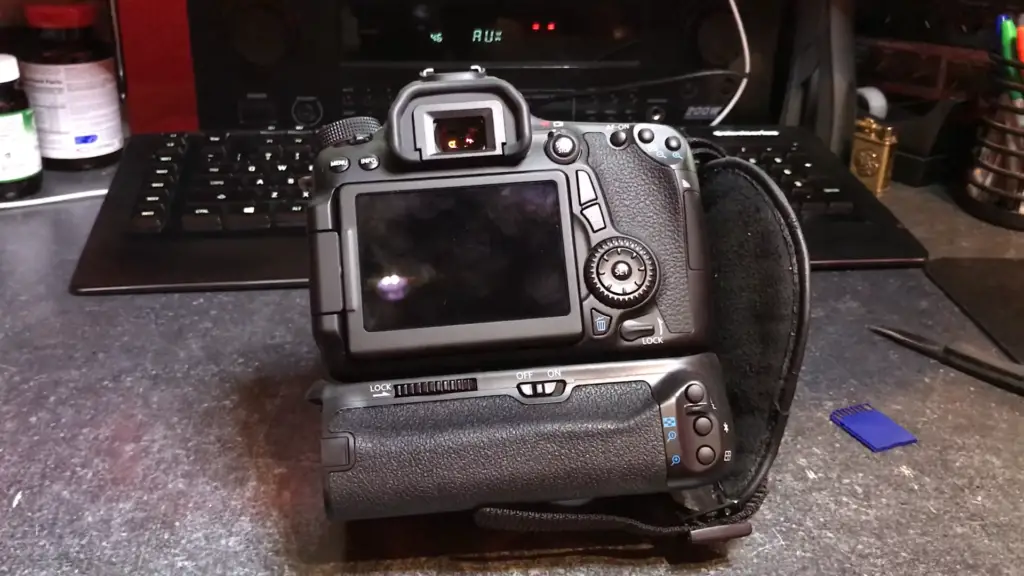
How to Activate the Nikon Camera Flash?
Activating the Nikon flash is a simple and straightforward process. First, mount the flash on your camera’s hot shoe. Make sure the foot of the flash unit is firmly attached to the camera body and that all connections are secure.
Next, set your mode dial on your camera to “flash”. For most Nikon cameras this means pressing the “FN” button and then selecting “Flash On”. You will see a lightning bolt icon on your camera’s LCD screen when your flash is active.
Now, adjust the settings of your Nikon Flash to control its output based on how far away you are from the subject you plan to photograph. Most Nikon flashes have an adjustable range that is indicated on the back of the unit. Once you have set your desired range, you will be ready to take amazing photos in low-light environments! [1]
Tips for Using the Nikon Camera Flash
When using a flash unit with your Nikon camera, it’s important to keep several tips in mind:
- Utilize bounce lighting when possible. This means adjusting the angle of your flash head in such a way that the light bounces off the ceiling or walls and onto your subject, which provides softer, more natural looking lighting.
- Use an external diffuser to soften harsh shadows when shooting close-up photos.
- Try using slow-sync flash mode if you are shooting at night or in dark environments. This will allow your camera to keep the shutter open for a longer period of time while still capturing the image with a flash burst.
- Experiment with different exposures when using a Nikon flash to get creative and explore different lighting options.
- For more dramatic, high contrast shots, try using multiple flashes positioned at various angles around your subject.
This will create interesting lighting effects and can be used to isolate your subject from the background.
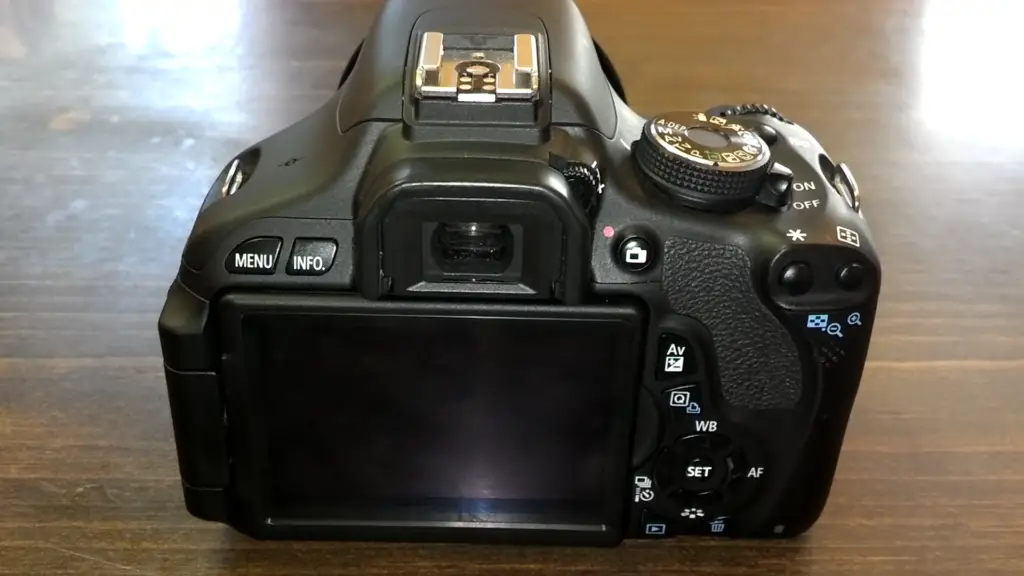
By following these tips, you’ll be able to get the most out of your Nikon camera’s flash capabilities and be able to take stunning photos in any setting! Enjoy experimenting with different setups and creating some unique images. [2]
Special Considerations When Using a Flash
When using a flash with your Nikon camera, it’s important to keep in mind that flash units can be very powerful and should be used responsibly. Make sure you understand the power settings of your flash unit and always use caution when aiming it at people or animals. Additionally, some venues may have restrictions on the use of flash photography – check ahead before attempting to photograph in locations.
Finally, be aware that flash photography can create intense glare and reflection when shooting near shiny surfaces like chrome or glass. To avoid this issue, adjust the angle of your flash or use a diffuser to diffuse the light.
By keeping these tips in mind and knowing how to properly utilize your Nikon camera flash, you’ll be able to take amazing photos regardless of the environment or lighting conditions. Have fun experimenting and capturing unique images!
Troubleshooting Your Nikon Camera Flash
If you are having difficulty turning on the flash of your Nikon camera, there are a few steps you can take to try and troubleshoot it.
- First, check that the flash is enabled in your camera settings. If it is not, you will need to enable it in order to use the flash.
- Once the flash is enabled, you should check to make sure the flash head is raised. If it is down, then the flash will not fire.
- The next step would be to ensure that your camera batteries are fresh and charged before attempting to use the flash.
- If you have just purchased a new Nikon camera, it may come with a special flash adapter that will help you to control the flash settings and allow it to be turned on.
- Finally, if none of these steps have worked, then it may be necessary to contact Nikon’s customer service department for further assistance with turning on the flash on your camera. They should be able to provide guidance and helpful tips to get the flash working correctly again.
In conclusion, it is possible to troubleshoot any issues you may be having with turning on your Nikon camera flash. By following the steps outlined above, you should be able to get your flash working properly in no time. If you still need help after trying these steps, contact Nikon’s customer service department for further assistance. They should be able to provide helpful advice and guidance to ensure that your flash is working properly. With the right tools and knowledge, you can get your Nikon camera’s flash up and running in no time! [3]
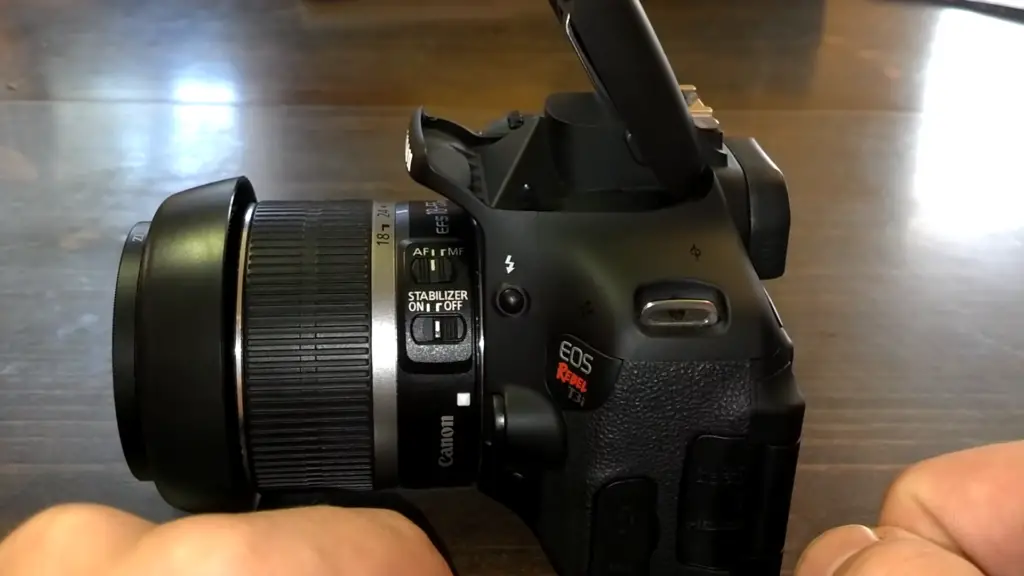
Repairing Your Nikon Camera Flash
If you have tried the troubleshooting steps outlined above but are still having difficulty getting your Nikon camera flash to work correctly, then you may need to repair the flash. Depending on the issue you’re having, you may need to replace certain parts of your flash or even have it professionally serviced.
If you are confident in your ability to diagnose and fix any technical issues with your camera’s flash, then you can purchase replacement parts online and replace them yourself. However, if this is not a task you feel comfortable attempting, then you should consider taking your camera to a professional repair service. This way, they can diagnose the issue and make any repairs necessary to get your flash working properly again.
No matter how you decide to repair your Nikon camera flash, it is important that you are careful and follow all safety guidelines when handling and repairing any electrical equipment. This will ensure that you don’t cause any further damage to your camera or put yourself in danger.
Getting Creative With On-Camera Flash
Once you have mastered turning on the flash on your Nikon camera, it can open up a world of creative possibilities. When used in combination with natural light, on-camera flash can create beautiful and dramatic lighting effects that will take your photography to the next level.
When shooting indoors or in low light situations, the right use of flash can help you capture amazing images. Experimenting with different flash settings and techniques can allow you to create unique and interesting looks in any environment.
For outdoor photography, using on-camera flash can help fill in shadows or add a sparkle of light to your subject. You can also use flash for backlighting your subject or as a creative tool for adding highlights and dimension to a scene. [4]
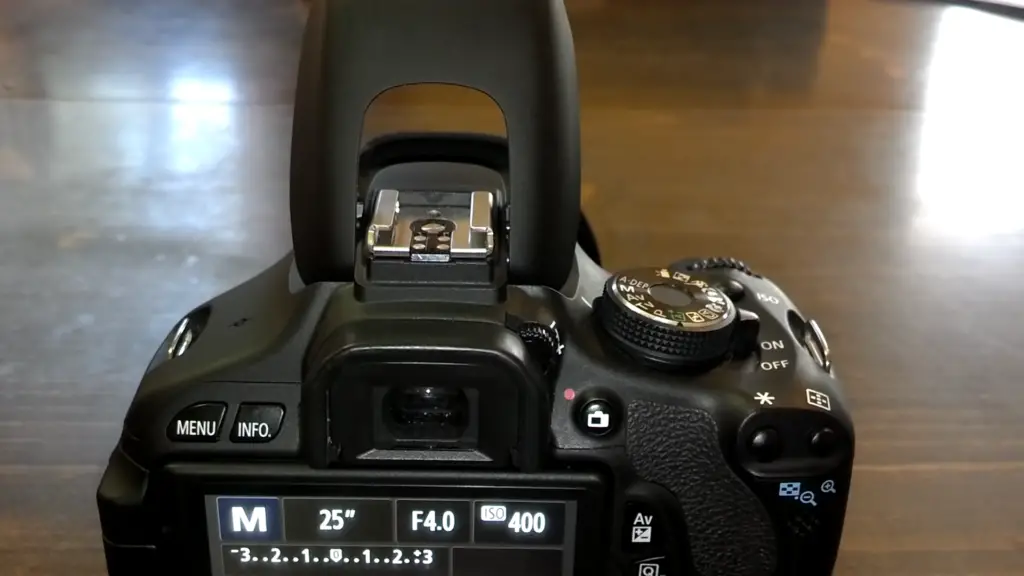
If you’re feeling adventurous, use your on-camera flash to create light painting or light graffiti images. These techniques involve using long exposures and moving the camera or flash around while the shutter is open. This will create fun and unique images that are sure to impress!
No matter what type of photography you specialize in, getting creative with on-camera flash will help you take your photos to the next level. With a little bit of practice and experimentation, you can create beautiful lighting effects that will bring life to any photograph. So get out there and start playing around with your flash—you’ll be surprised at what you can do!
How Powerful Is Your Flash?
When it comes to the flash on your Nikon camera, its power is determined by several factors. The most important factor is the camera’s ISO setting. Generally speaking, the higher the ISO setting for a given shot, the more powerful the flash will be. Additionally, if you are shooting at a faster shutter speed (which requires more light), then you will have to use a more powerful flash.
The other factor that affects the power of the flash is the angle at which it is pointing when you take your shot. The further away from your subject, the less powerful the light will be. Therefore, if you are shooting a portrait or any close-up shot, you should aim to position the flash as close as possible to your subject. Additionally, the angle of the flash also affects the amount of light that will be captured in a given shot. Depending on how you want your picture to appear, you may choose to point the flash higher or lower depending on what kind of shadows and reflections you are aiming for.
Finally, when it comes to shooting with a Nikon camera, some models feature the option to adjust the flash power manually. For example, if you are shooting in a low light condition and need more illumination for your shot, you may be able to boost the flash power on some Nikon cameras manually.
On the whole, when it comes to capturing images with your Nikon camera’s flash, there is no one-size-fits-all solution. You have to experiment with the lighting and positioning of your flash and adjust it accordingly depending on your desired outcome. With a bit of practice, you will be able to take beautiful photos using your Nikon camera’s flash. [5]
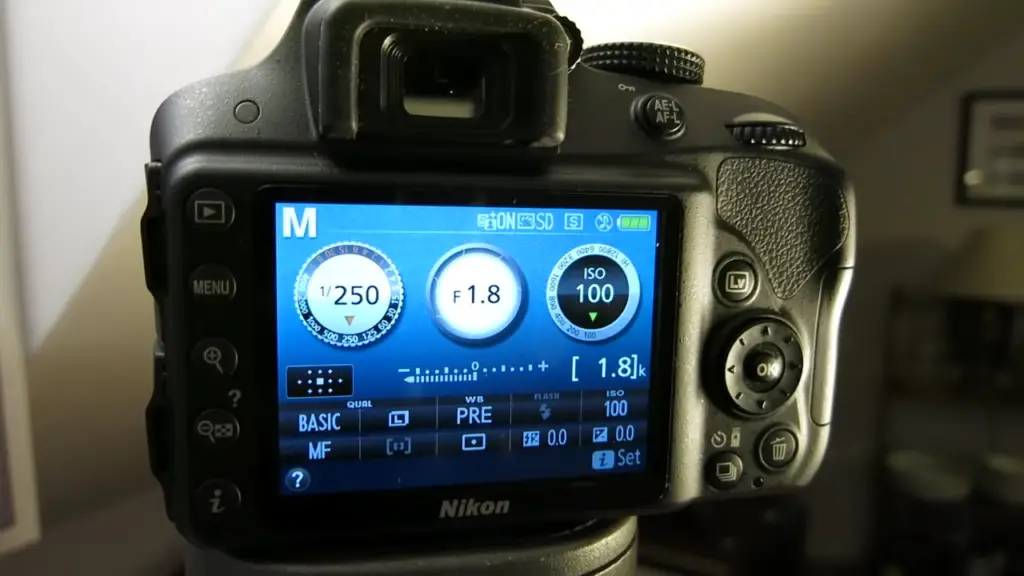
TTL Flash vs Manual Flash
When it comes to photographing with a Nikon camera, you can either use TTL (through the lens) flash or manual flash.
TTL flash is designed for fast, easy setup and operation. This type of flash will automatically adjust its power output based on the camera’s ISO setting and the distance of the subject from the lens. This eliminates any guesswork and makes it simple to capture great images quickly.
Manual flash, on the other hand, offers more control when shooting with a Nikon camera. You can adjust the power output of the flash according to your desired outcome, allowing you to get creative with your shots. This type of flash also allows you to use multiple off-camera flashes for complex lighting setups, which is great for portrait and macro photography.
When deciding between TTL or manual flash, it all comes down to personal preference and the types of photos you plan to take. If speed and convenience are important factors, then TTL flash is the way to go. However, if you are looking for more creative control over your shots then manual flash may be a better option.
No matter which type of flash you decide to use, make sure that your Nikon camera is properly set up for using the flash. This includes setting the shutter speed, ISO and aperture accordingly as well as making sure that your battery is fully charged. With these factors in place, you will be able to capture beautiful images with your Nikon camera’s flash! [6]
Steps To Pop-Up Flash Portrait Success
- Set your ISO to a low value like 100-200 for the best results when shooting with flash.
- Attach and mount the flash on the camera’s hot shoe port and turn it on.
- Prepare to adjust the amount of light you will be using for the shot, by changing either the power output or zoom of the flash.
- Select a lens with higher maximum f-stop for better light control and use the aperture priority mode to adjust the depth of field.
- Set your shutter speed 1/200, or higher if needed. This will ensure that any ambient light is properly exposed even when using an external flash.
- If you’re shooting in manual mode, set the shutter speed and aperture to balance out the ambient light and flash for best portrait results.
- When you’re ready to take the shot, pop-up the built-in flash on your Nikon camera. This will provide a fill effect that adds extra depth and texture to your portrait shots.
- Finally, review and make any necessary adjustments for your portrait shot.
- Experiment with different apertures, shutter speeds, and flash settings to create stunning portraits with the pop-up flash on Nikon camera.
- Once you’ve achieved the desired result in your portraits, save them as JPG files or RAW formats depending on your preferences. This will help preserve the photos and keep them looking their best.
- With a bit of practice, you’ll be able to capture perfect portraits using the pop-up flash on your Nikon camera!
- For more advanced techniques, consider investing in an external flash with additional features like bounce lighting or diffusers for creative effects. This will allow for even more control over the look and feel of your portraits.
- Don’t forget to have fun experimenting with the pop-up flash on Nikon camera! After all, that’s what photography is all about. So, be creative and enjoy the results of your hard work in photographing beautiful portrait shots!
- Share these photos with friends and family to show off your amazing skills in using the pop-up flash on Nikon cameras. This will not only bring joy and happiness to those around you, but also give you a sense of satisfaction for creating beautiful works of art.
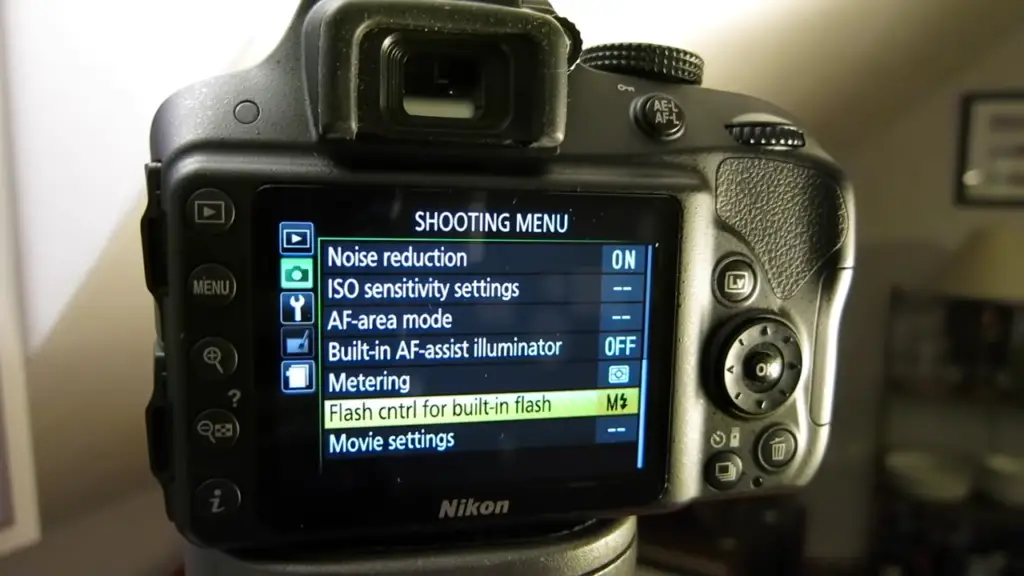
How Do I Know If My Camera Has Flash?
If your Nikon camera has an on/off button for the flash, then you know it comes with a built-in flash. You may also be able to tell if a camera has a flash by looking at its lens. Some lenses have small flashes built into them that will appear when they are in use. If your camera does not have an on/off button for flash, it may still have a built-in flash. In this case, you can check the manual or ask your camera manufacturer to find out if it has one. [7]
Why Not Use Flash On-Camera?
Using flash on-camera can be problematic for some photographers because it creates a flat, unnatural light that often results in washed out images. To get the most natural look and feel from your photos, you should use an off-camera flash.
FAQ
How do I turn on the flash on my Nikon camera?
To turn on the flash on your Nikon camera, press the “Flash” button. This should be located near the shutter release button or in the settings menu. If you are having trouble finding this button, consult your camera’s manual for more detailed instructions.
What are some alternatives to using flash?
Using natural light usually produces much better results than flash. If you don’t have access to natural light, you can also use reflectors or soft boxes to diffuse and shape the light. Adjusting your camera settings such as shutter speed, ISO, aperture, and white balance can also help you get good-looking shots without flash. Finally, editing tools like Adobe Photoshop and Lightroom can help you adjust the look of your photos after they’ve been taken.
Can I use flash on my Nikon camera?
Yes, most Nikon cameras come with a built-in flash. If you can’t find the “Flash” button, consult your camera’s manual for instructions on how to turn it on. You can also use an off-camera flash to get better results.
Is using a flash bad for my camera?
No, using a flash is not bad for your camera. However, it’s important to make sure that you are using the right settings and techniques when taking photos with your built-in or off-camera flash. Over-using or misusing flash can cause overexposure, so it’s important to pay attention to the settings of your camera and use caution when using a flash.
What models of Nikon cameras have built-in flash?
The majority of Nikon cameras have built-in flash, but the specifics depend on which model you are using. Most entry-level DSLR and mirrorless cameras have a popup flash that is activated by pressing the flash button located on the top or side of the camera. Mid-range and higher end DSLRs usually have an integrated hot shoe for attaching an external flash. On the other hand, compact cameras typically have a small built-in flash that is usually wide enough to cover the sensor size of the camera. It is important to check your user manual to make sure that your camera has the feature before attempting to turn on the flash.
Can I control the intensity of the flash on my Nikon camera?
Yes, you can adjust the intensity of the flash on most Nikon cameras. On entry-level and mid-range models, you will need to use the settings menu to control the flash power. You can also adjust the flash exposure compensation (FEC) setting to fine-tune how bright or dark your images are. Higher end models often have a dedicated button for flash intensity control. It’s important to note that the maximum amount of light emitted from the flash will depend on your lens and distance from the subject. To get the best results, it is recommended to experiment with different settings until you find what works best for your setup.
Useful Video: How to enable or disable flash in Nikon DSLR
Conclusion
In conclusion, most Nikon cameras have built-in flash that can be turned on by pressing a button. Depending on your camera model, you may also be able to adjust the intensity of the flash to get better results in certain lighting situations. It is advised to read through your user manual before attempting to turn on or adjust the flash settings. With a little bit of practice, you will be able to get the most out of your Nikon camera’s built-in flash.
References
- https://cameraanalyzer.com/how-to-turn-the-flash-on-a-nikon-camera/
- https://www.dummies.com/article/home-auto-hobbies/photography/how-to-use-the-built-in-flash-on-your-nikon-d3200-159841/
- https://imaging.nikon.com/support/digitutor/d3500/functions/flash.html
- https://mecam.me/how-to-turn-off-the-flash-on-your-nikon-coolpix-camera/
- https://www.nikonusa.com/en/learn-and-explore/a/tips-and-techniques/the-basics-of-flash-photography.html
- https://www.cnet.com/tech/computing/how-to-use-nikons-wireless-flash-system/
- https://photographyforrealestate.net/how-to-use-external-flash-nikon/





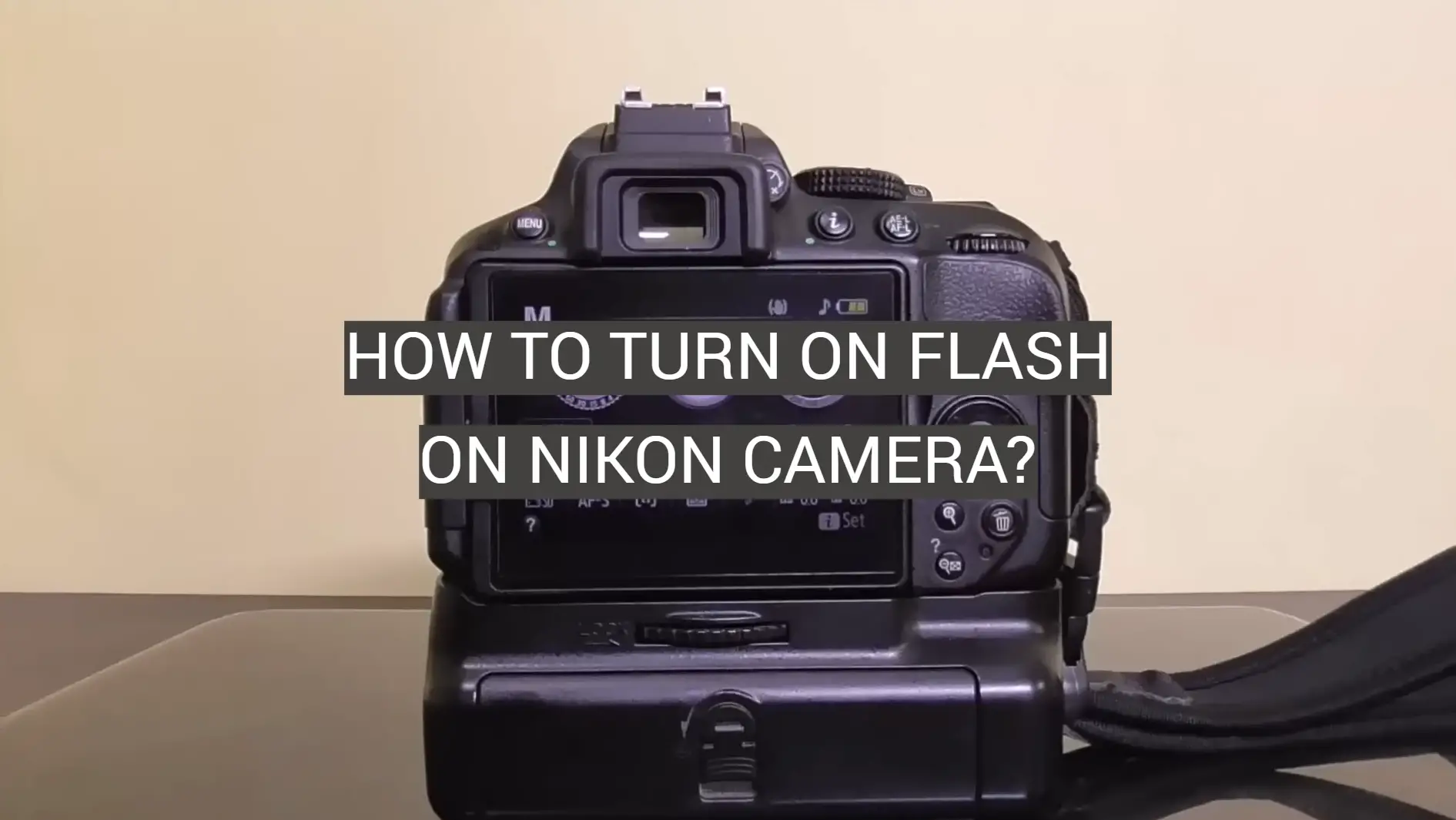
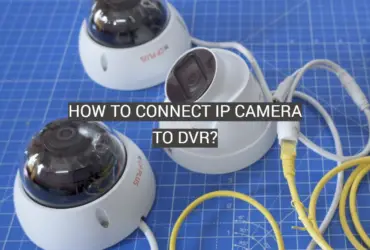
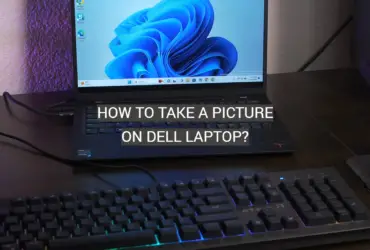

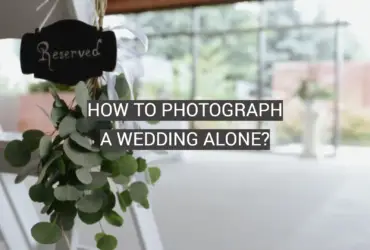
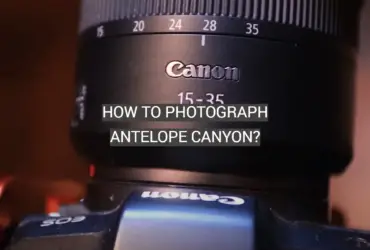
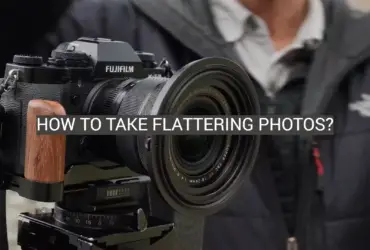
Leave a Reply